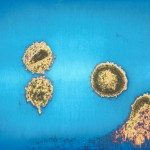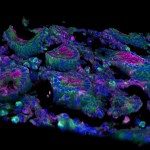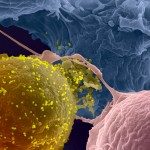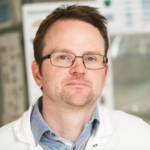Link to Pubmed [PMID] – 28077644
Link to DOI – e02296-1610.1128/JVI.02296-16
J Virol 2017 03; 91(6):
The existence of HIV reservoirs in infected individuals under combined antiretroviral therapy (cART) represents a major obstacle toward cure. Viral reservoirs are assessed by quantification of HIV nucleic acids, a method which does not discriminate between infectious and defective viruses, or by viral outgrowth assays, which require large numbers of cells and long-term cultures. Here, we used an ultrasensitive p24 digital assay, which we report to be 1,000-fold more sensitive than classical enzyme-linked immunosorbent assays (ELISAs) in the quantification of HIV-1 Gag p24 production in samples from HIV-infected individuals. Results from ultrasensitive p24 assays were compared to those from conventional viral RNA reverse transcription-quantitative PCR (RT-qPCR)-based assays and from outgrowth assay readout by flow cytometry. Using serial dilutions and flow-based single-cell sorting, we show that viral proteins produced by a single infected cell can be detected by the ultrasensitive p24 assay. This unique sensitivity allowed the early (as soon as day 1 in 43% of cases) and more efficient detection and quantification of p24 in phytohemagglutinin-L (PHA)-stimulated CD4+ T cells from individuals under effective cART. When seven different classes of latency reversal agents (LRA) in resting CD4+ T cells from HIV-infected individuals were tested, the ultrasensitive p24 assay revealed differences in the extent of HIV reactivation. Of note, HIV RNA production was infrequently accompanied by p24 protein production (19%). Among the drugs tested, prostratin showed a superior capacity in inducing viral protein production. In summary, the ultrasensitive p24 assay allows the detection and quantification of p24 produced by single infected CD4+ T cells and provides a unique tool to assess early reactivation of infectious virus from reservoirs in HIV-infected individuals.IMPORTANCE The persistence of HIV reservoirs in infected individuals under effective antiretroviral treatment represents a major obstacle toward cure. Different methods to estimate HIV reservoirs exist, but there is currently no optimal assay to measure HIV reservoirs in HIV eradication interventions. In the present study, we report an ultrasensitive digital ELISA platform for quantification of the HIV-1 protein p24. This method was employed to assess the early reactivation of infectious virus from reservoirs in HIV-1-infected individuals. We found that viral proteins produced by a single infected cell can be detected by an ultrasensitive p24 assay. This unprecedented resolution showed major advantages in comparison to other techniques currently used to assess viral replication in reactivation studies. In addition, such a highly sensitive assay allows discrimination of drug-induced reactivation of productive HIV based on protein expression. The present study heralds new opportunities to evaluate the HIV reservoir and the efficacy of drugs used to target it.










